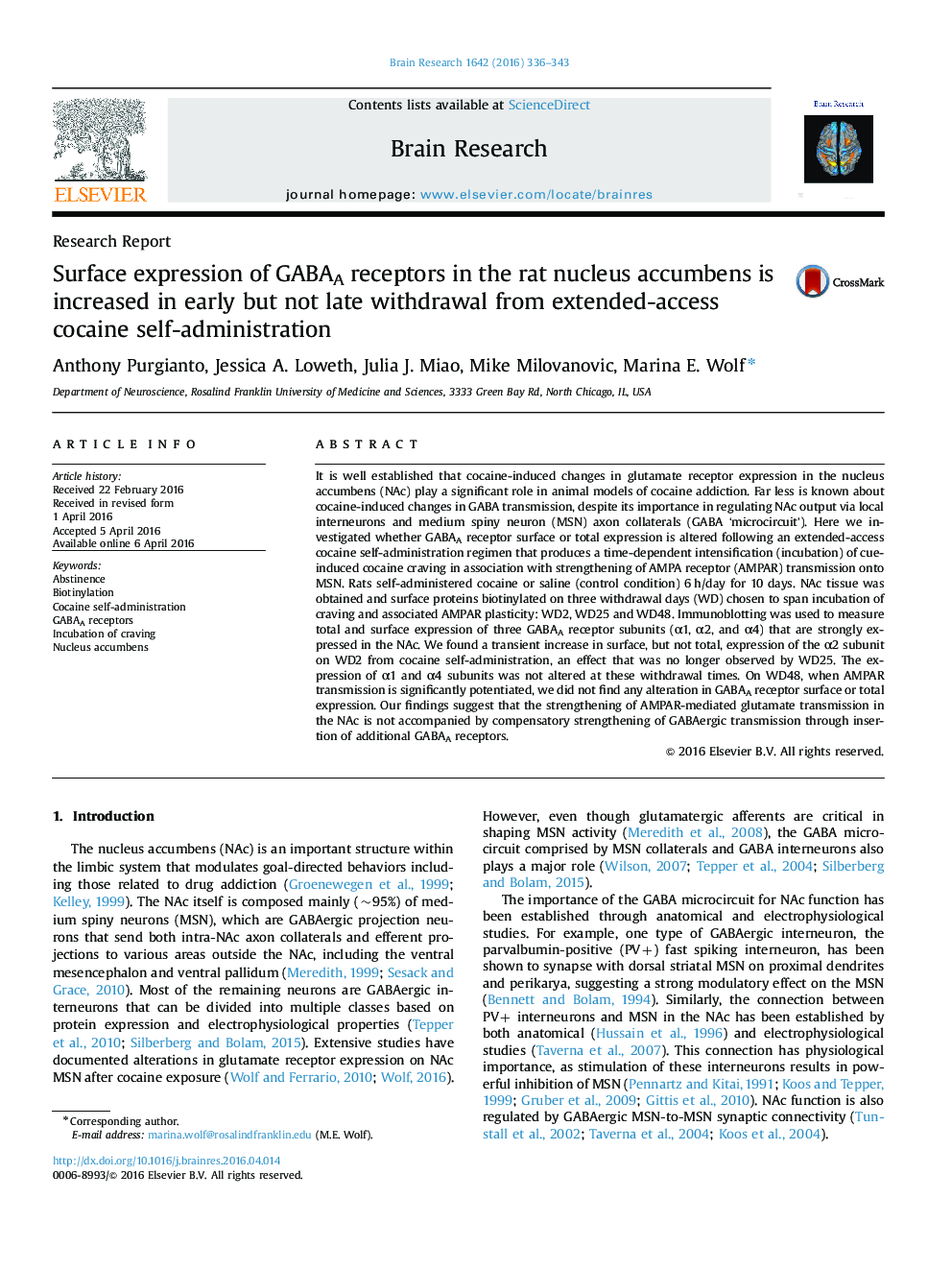| Article ID | Journal | Published Year | Pages | File Type |
|---|---|---|---|---|
| 4323595 | Brain Research | 2016 | 8 Pages |
•Cocaine craving incubates during withdrawal from cocaine self-administration (SA).•GABA is critical for regulating NAc output but its role in incubation is unknown.•GABAAR α1, α2, and α4 subunits were measured during withdrawal from cocaine SA.•In early withdrawal (day 2), α2 surface expression was increased in NAc core.•No alterations in GABAAR subunits were found in late withdrawal (25 or 48 days).
It is well established that cocaine-induced changes in glutamate receptor expression in the nucleus accumbens (NAc) play a significant role in animal models of cocaine addiction. Far less is known about cocaine-induced changes in GABA transmission, despite its importance in regulating NAc output via local interneurons and medium spiny neuron (MSN) axon collaterals (GABA ‘microcircuit’). Here we investigated whether GABAA receptor surface or total expression is altered following an extended-access cocaine self-administration regimen that produces a time-dependent intensification (incubation) of cue-induced cocaine craving in association with strengthening of AMPA receptor (AMPAR) transmission onto MSN. Rats self-administered cocaine or saline (control condition) 6 h/day for 10 days. NAc tissue was obtained and surface proteins biotinylated on three withdrawal days (WD) chosen to span incubation of craving and associated AMPAR plasticity: WD2, WD25 and WD48. Immunoblotting was used to measure total and surface expression of three GABAA receptor subunits (α1, α2, and α4) that are strongly expressed in the NAc. We found a transient increase in surface, but not total, expression of the α2 subunit on WD2 from cocaine self-administration, an effect that was no longer observed by WD25. The expression of α1 and α4 subunits was not altered at these withdrawal times. On WD48, when AMPAR transmission is significantly potentiated, we did not find any alteration in GABAA receptor surface or total expression. Our findings suggest that the strengthening of AMPAR-mediated glutamate transmission in the NAc is not accompanied by compensatory strengthening of GABAergic transmission through insertion of additional GABAA receptors.
